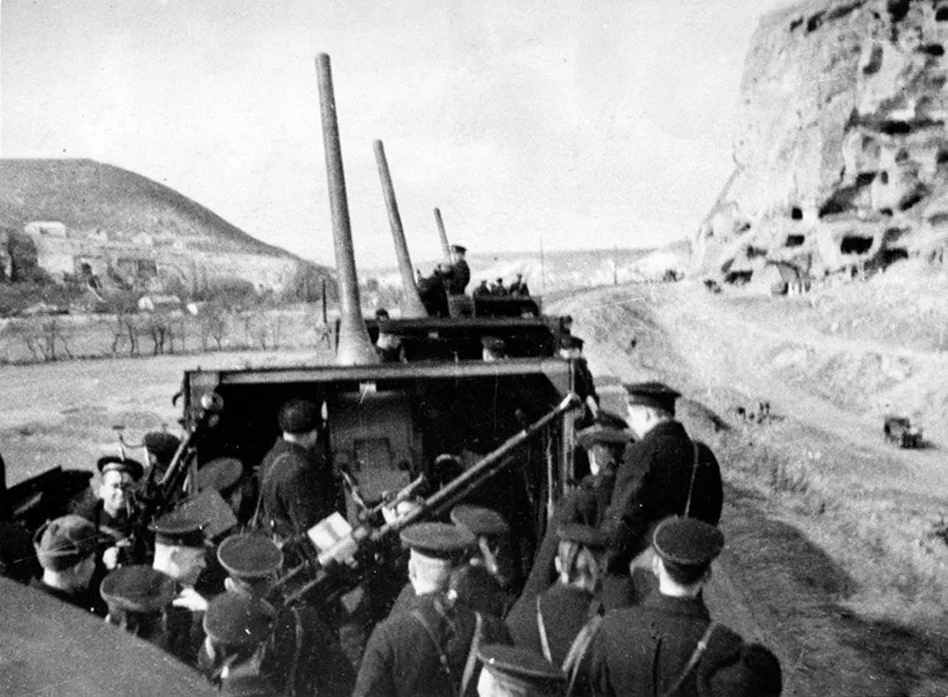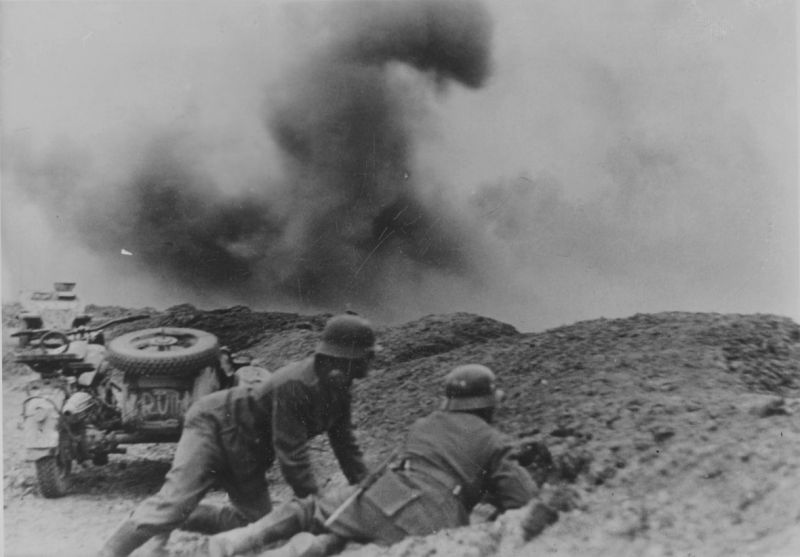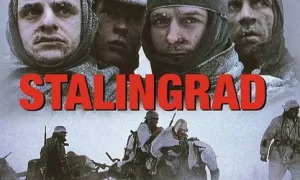Crimean Defensive Operation WW2
(October 18 – November 16, 1941) – the defense of the Crimea at the beginning of World War II. Although the fighting on the isthmus had been going on since September 15, the duration of the operation was 62 days.
By the end of September 1941, Nazi German troops captured Smolensk and Kiev and blockaded Leningrad. In the southwestern direction, the enemy also achieved significant success: in the battle near Uman and in the ” Kiev cauldron ” the main forces of the Southwestern Front of the Red Army were defeated, most of the Ukrainian SSR was occupied. In mid-September, the Wehrmacht reached the approaches to the Crimea.
The Crimea was of strategic importance as one of the routes to the oil-bearing regions of the Caucasus (through the Kerch Strait and Taman). In addition, the Crimea was important as a base for aviation. With the loss of the Crimea, Soviet aviation would have lost the possibility of raids on the oil fields of Romania, and the Germans would have been able to strike at targets in the Caucasus. The Soviet command understood the importance of holding the peninsula and concentrated on this, abandoning the defense of Odessa.
The position of the troops before the start of the operation


The only strategic land route to the Crimea lay through the Isthmus of Perekop. On September 12, advanced German units reached the Crimea. The commander of the 11th Army, Manstein, decided to create a grouping of troops consisting of: the 54th Army Corps, the 3rd Romanian Army and the 49th Mountain Corps, removed from the Rostov direction, artillery of the RGK, engineering troops and anti-aircraft artillery. Air support was provided by units of the 4th Air Corps of the Luftwaffe.
By mid-October, by decision of the Headquarters of the Supreme High Command, the Primorsky Army was transferred from Odessa, and its units reached the combat area only on October 23. Thus, the Soviet troops began to have 12 rifle divisions (probably, from two to four of them were not finally formed) and 4 cavalry divisions (an additional 2nd cavalry division arrived at the end of September). At the same time, the Germans were able to allocate the 11th Army for the capture of Crimea, consisting of 7 infantry divisions (according to Manstein’s memoirs – six: 22nd, 72nd, 170th, 46th, 73rd, 50th) and the Romanian mountain corps of two brigades, in the later stages of the operation also the Romanian cavalry corps (5th, 6th and 8th cavalry brigades).
Crimea Operation
In September, troops from the German Army Group South defeated the Soviet Southwestern Front east of Kiev. The German command decided to carry out an operation to capture the Donbass and Crimea, while the Soviet troops did not gain a foothold on the new frontiers.
Battles for Perekop

On September 24, German troops, with the help of two infantry divisions (46th and 73rd), which corresponds to 34-42 thousand soldiers, with the support of artillery and aviation, went on the offensive on the Perekop Isthmus. In the course of heavy fighting, by September 26, they managed to break through 2 regiments (6 thousand soldiers) guarding the coast of the Sivash to the Turkish Wall, and push back the 156th rifle division, and capture the city of Armyansk. A counterattack, hastily organized by the commander of the operational group, Lieutenant General P. I. Batov, arrived units of one and a half rifle and 42nd cavalry divisions, did not lead to the desired result. Armyansk passed from hand to hand, but remained with the German troops. By September 30, Soviet troops retreated to the Ishun positions, where they forced the Germans to stop developing the offensive. Manstein, due to heavy losses, as well as the fact that part of the forces – the SS motorized division “Adolf Hitler” and the 49th mountain corps – were diverted to the Rostov direction, temporarily refused further advance. According to German data, as a result of the fighting, the Soviet side lost 135 guns, 112 tanks and 10 thousand prisoners.
Fights for the Ishun positions and the abandonment of the northern Crimea

German Scout Units
On October 18, the 11th German Army, with the forces of three divisions, launched an offensive against the Ishun positions. They were defended by units of the 9th Rifle Corps with the help of coastal batteries and separate units of the Black Sea Fleet. Heavy fighting continued for 5 days, in which the Germans gradually pushed back the Soviet troops.
To improve the coordination of troops, land and sea forces in the Crimea were combined. On October 22, the command of the Crimean troops was created, headed by Vice Admiral G. I. Levchenko. Two land armies and the Black Sea Fleet began to obey him.
The 157th Rifle Division and the 2nd Cavalry Division, which arrived first from Odessa, were sent by the decision of the command of the 51st Army to reinforce the 9th Corps.
On October 24, 1941, the units of the Primorsky Army launched a counterattack and fought a head-on battle with the enemy for two days. However, on October 26, Manstein introduced two fresh infantry divisions at the junction of the armies and broke through the defenses on October 28. Parts of the Primorsky Army, providing scattered resistance to the better organized and more mobile formations of the Wehrmacht, withdrew to Sevastopol, and a significant part through Yalta and the South Coast Highway, some parts dispersed in the Crimean mountains and joined the partisans. The rest of the troops of the 51st Army retreated east towards Kerch. The attempt of the retreating Soviet troops to gain a foothold on the Kerch Peninsula was unsuccessful. Finally, under pressure 42nd Army Corps of the Germans (three infantry divisions), the remnants of the 51st Army could not hold out in the Crimea and by November 16 were evacuated to the Taman Peninsula.
The coastal army, consisting of five rifle and three cavalry divisions, withdrew to Sevastopol. They were pursued by the 54th Army Corps (two infantry divisions and a formed motorized brigade), in addition, the 30th Army Corps, as part of two infantry divisions, crossed the Crimean Mountains to reach the southern coast of Crimea and cut the Alushta -Sevastopol road.
The 321st Rifle Division was inactive near Evpatoria in September and October. Then she fought alone with the German troops advancing towards Yevpatoria, and only a few of her remnants were able to go to the partisans.
Results
As a result of the Crimean defensive operation, it was not possible to prevent the invasion of German troops into the territory of Crimea on natural water lines (Sivash), however, significant losses were inflicted on the German troops, and their significant forces were pinned down. This made it possible to prevent an outright capture and organize the defense of Sevastopol and the Taman Peninsula. On October 30, the 2nd, 250-day siege of Sevastopol began. Indirectly, the concentration of German forces in the Crimea contributed to the success of the Rostov Offensive.
However, six division were completely destroyed and the rest of the Soviet divisions suffered significant losses, many of which were formed a few months before the operation and were not completed and did not go through combat coordination. German troops owned the initiative, had an advantage in aviation. However, they failed to create coverage and encirclements of Soviet troops larger than a division in the Crimea, as they did at the initial stage of the war, the Primorsky Army, although through difficult marches, avoided encirclement and reached Sevastopol.










